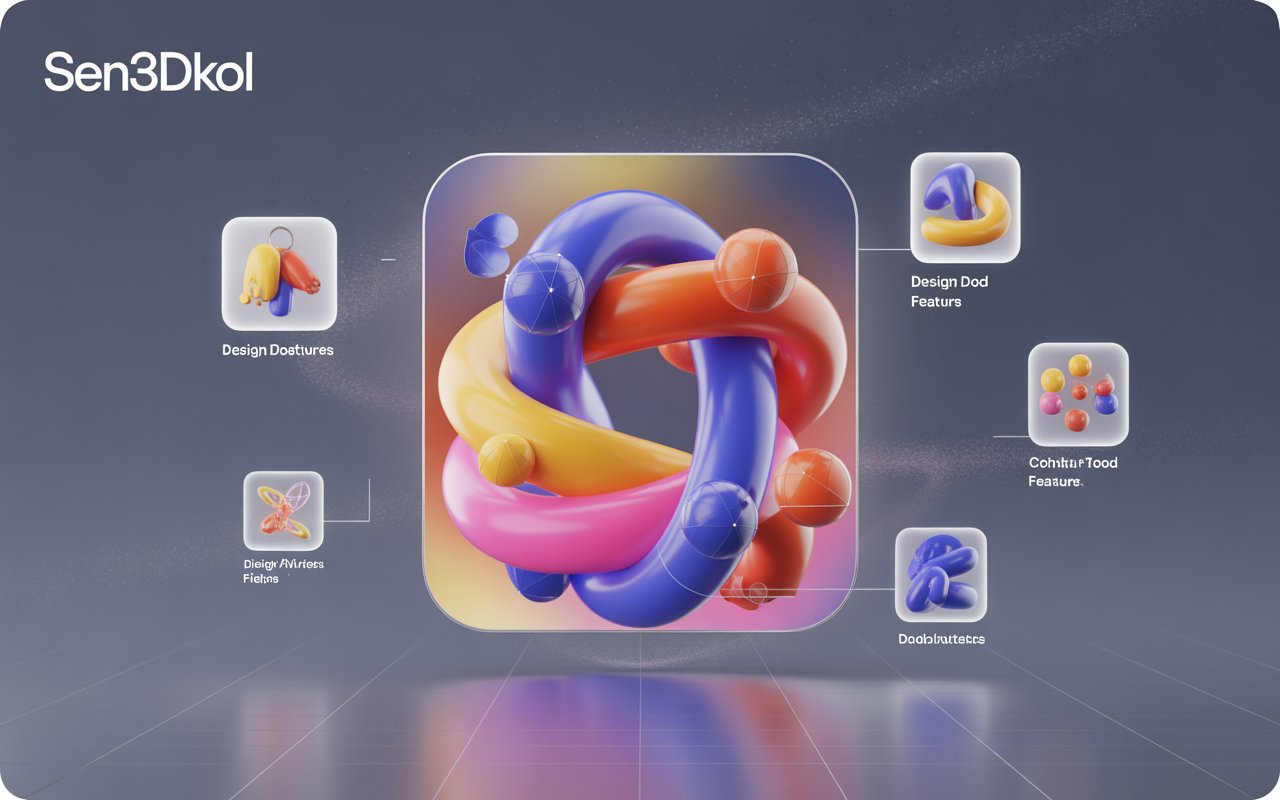In the sophisticated realm of scientific computing and research data analysis, sen3dkol software has emerged as a comprehensive analytical platform that combines advanced statistical methods, powerful data visualization, and intelligent research workflow automation to support breakthrough scientific discoveries. This cutting-edge research software addresses complex analytical requirements while providing intuitive interfaces and robust computational capabilities that accelerate scientific research across diverse disciplines. Understanding sen3dkol software requires exploring its analytical capabilities, research tools, and the scientific insights it enables across various research environments.
Advanced Statistical Analysis and Mathematical Modeling
The computational core within sen3dkol software delivers exceptional statistical analysis through comprehensive test libraries, advanced modeling algorithms, and machine learning integration that enables researchers to extract meaningful insights from complex datasets while maintaining statistical rigor and reproducibility standards. These analytical capabilities support evidence-based research while ensuring statistical validity and scientific accuracy. The statistical excellence in sen3dkol software includes comprehensive test suites, modeling algorithms, and machine learning tools.
Mathematical modeling and simulation within sen3dkol software provides differential equation solving, numerical analysis, and computational modeling that enables researchers to simulate complex systems while testing theoretical predictions and exploring parameter spaces through sophisticated mathematical frameworks. These modeling features support theoretical research while enabling predictive analysis and hypothesis testing. The mathematical capabilities of sen3dkol software include equation solving, numerical methods, and system simulation.
Comprehensive Data Visualization and Scientific Graphics
Advanced visualization engine within sen3dkol software creates publication-quality graphics, interactive plots, and 3D visualizations that communicate research findings effectively while supporting exploratory data analysis and scientific presentation requirements. These visualization capabilities enhance research communication while supporting data exploration and insight discovery. The visualization features in sen3dkol software include publication graphics, interactive plotting, and 3D visualization.
Scientific plotting and charting within sen3dkol software offers specialized plot types, statistical graphics, and custom visualization options that address discipline-specific visualization needs while maintaining professional quality standards for scientific publications and presentations. These plotting features ensure appropriate data representation while supporting diverse scientific communication needs. The plotting capabilities of sen3dkol software include specialized charts, statistical graphics, and custom visualizations.
Multi-Disciplinary Research Support and Domain Expertise
Bioinformatics and life sciences within sen3dkol software provides genomics analysis, protein modeling, and biological pathway analysis that supports biological research while offering specialized tools for molecular biology and computational biology applications. These life sciences features enable biological discovery while supporting interdisciplinary research collaborations. The bioinformatics tools in sen3dkol software include genomics analysis, protein modeling, and pathway visualization.
Physics and engineering analysis within sen3dkol software includes signal processing, image analysis, and physical modeling that supports experimental data analysis while providing computational tools for physics research and engineering applications. These physics features enable quantitative analysis while supporting theoretical and experimental research integration. The physics capabilities of sen3dkol software include signal processing, image analysis, and physical modeling.
Research Workflow Automation and Laboratory Integration
Intelligent workflow automation within sen3dkol software streamlines research processes, automates data analysis pipelines, and manages experimental workflows that increase research productivity while ensuring reproducibility and consistency across research projects. These automation features enhance efficiency while maintaining research quality and scientific rigor. The workflow automation in sen3dkol software includes pipeline automation, process streamlining, and reproducibility assurance.
Laboratory instrument integration within sen3dkol software connects with analytical instruments, data acquisition systems, and measurement devices that enables seamless data import while maintaining data integrity and experimental documentation throughout the research process. This integration eliminates manual data transfer while ensuring data quality and experimental traceability. The instrument integration of sen3dkol software includes device connectivity, data import, and experimental documentation.
Collaborative Research and Data Sharing
Team collaboration features within sen3dkol software enable shared projects, version control, and collaborative analysis that support distributed research teams while maintaining data security and intellectual property protection through sophisticated collaboration management. These collaboration capabilities enhance research productivity while ensuring data protection and project coordination. The collaboration tools in sen3dkol software include shared projects, version control, and team coordination.
Data sharing and publication support within sen3dkol software facilitates data repository integration, metadata management, and research data sharing that supports open science initiatives while ensuring proper data documentation and citation standards. These sharing features promote scientific collaboration while maintaining data quality and attribution standards. The data sharing of sen3dkol software includes repository integration, metadata management, and citation support.
Machine Learning and Artificial Intelligence Integration
Advanced machine learning within sen3dkol software provides deep learning frameworks, neural network design, and AI model development that enables researchers to apply artificial intelligence techniques while maintaining interpretability and scientific validity in research applications. These AI capabilities support innovative research while ensuring scientific rigor and result interpretability. The machine learning in sen3dkol software includes deep learning, neural networks, and AI development.
Predictive analytics and pattern recognition within sen3dkol software offers clustering algorithms, classification methods, and predictive modeling that help researchers identify patterns while making data-driven predictions and discoveries through sophisticated analytical techniques. These predictive features enhance research insights while supporting hypothesis generation and testing. The predictive analytics of sen3dkol software include clustering, classification, and pattern recognition.
High-Performance Computing and Scalability
Parallel processing and HPC integration within sen3dkol software utilizes multi-core processors, GPU acceleration, and cluster computing that enables large-scale analysis while reducing computation time and supporting computationally intensive research applications. These performance capabilities handle big data while maintaining analysis speed and computational efficiency. The HPC integration in sen3dkol software includes parallel processing, GPU acceleration, and cluster support.
Cloud computing and distributed analysis within sen3dkol software provides scalable computing resources, cloud storage integration, and distributed processing that support large research projects while enabling collaborative computing and resource sharing across institutions. These cloud capabilities expand computational capacity while supporting collaborative research initiatives. The cloud computing of sen3dkol software includes scalable resources, distributed processing, and collaborative computing.
Quality Assurance and Reproducible Research
Comprehensive validation and verification within sen3dkol software implements statistical validation, result verification, and quality control measures that ensure research reliability while supporting reproducible science and peer review requirements. These quality features maintain research integrity while ensuring scientific validity and reproducibility. The quality assurance in sen3dkol software includes statistical validation, result verification, and reproducibility support.
Documentation and audit trails within sen3dkol software provide complete analysis documentation, parameter tracking, and methodology recording that support research transparency while enabling result reproduction and peer review validation. These documentation features ensure research traceability while supporting scientific communication and validation. The documentation capabilities of sen3dkol software include analysis tracking, parameter recording, and methodology documentation.
Programming and Scripting Integration
Comprehensive programming support within sen3dkol software includes Python integration, R connectivity, and custom scripting that enables researchers to extend functionality while incorporating existing code libraries and developing custom analytical solutions. These programming features provide flexibility while supporting diverse analytical approaches and methodological innovations. The programming integration in sen3dkol software includes Python support, R connectivity, and custom scripting.
API and extensibility within sen3dkol software offers programming interfaces, plugin development, and custom tool creation that enable researchers to customize functionality while integrating with existing research infrastructure and developing specialized analytical tools. These extensibility features support research innovation while enabling custom solution development. The API capabilities of sen3dkol software include programming interfaces, plugin development, and custom tools.
Educational Resources and Training Support
Comprehensive training materials within sen3dkol software include tutorials, workshops, and methodology guides that help researchers master analytical techniques while developing statistical expertise and research skills through structured learning programs. These educational resources support skill development while ensuring proper analytical methodology and statistical understanding. The training resources in sen3dkol software include tutorials, workshops, and methodology training.
Academic collaboration and institutional support within sen3dkol software provides educational licensing, curriculum integration, and academic partnerships that support teaching and learning while fostering next-generation researcher development through educational initiatives. These academic features support education while building research community engagement. The academic support of sen3dkol software includes educational licensing, curriculum support, and academic partnerships.
Performance Monitoring and System Optimization
Resource management and performance monitoring within sen3dkol software provides memory optimization, processing efficiency, and system resource management that ensures optimal performance while handling large datasets and complex analyses through intelligent resource allocation. These performance features maintain analysis speed while supporting large-scale research applications. The performance monitoring in sen3dkol software includes resource optimization, efficiency tracking, and system management.
Scalability and future-proofing within sen3dkol software offers modular architecture, upgrade compatibility, and technology evolution support that protects research investments while enabling adaptation to advancing computational requirements and research methodologies. This scalability ensures long-term value while supporting research evolution and technological advancement. The scalability features of sen3dkol software include modular design, upgrade compatibility, and technology adaptation.
Industry Recognition and Scientific Impact
Scientific community adoption within sen3dkol software demonstrates usage by leading research institutions, government laboratories, and academic centers that validate software quality and research capability through real-world scientific applications and research outcomes. This adoption provides credibility while supporting software reputation and research impact. The scientific adoption in sen3dkol software includes institutional usage, research validation, and community recognition.
Publication support and citation impact within sen3dkol software includes research publication assistance, citation tracking, and scientific impact measurement that support research dissemination while demonstrating software contribution to scientific advancement and knowledge creation. These publication features enhance research impact while supporting scientific communication and recognition. The publication support of sen3dkol software includes research assistance, citation tracking, and impact measurement.
Conclusion
Sen3dkol software represents a comprehensive scientific computing and research analysis platform that successfully combines advanced statistical methods, powerful visualization capabilities, and intelligent workflow automation to accelerate scientific discovery and research innovation across diverse scientific disciplines. The software’s combination of analytical depth, computational power, collaboration features, and educational support makes it an essential research tool for scientists, researchers, and academic institutions seeking powerful yet accessible analytical solutions that enhance research capabilities while maintaining scientific rigor and reproducibility standards. Whether supporting basic research, applied science, or interdisciplinary collaboration, sen3dkol software provides the analytical power, visualization tools, and collaborative features needed to advance scientific knowledge while adapting to evolving research requirements and technological advances across diverse scientific applications and research environments.



